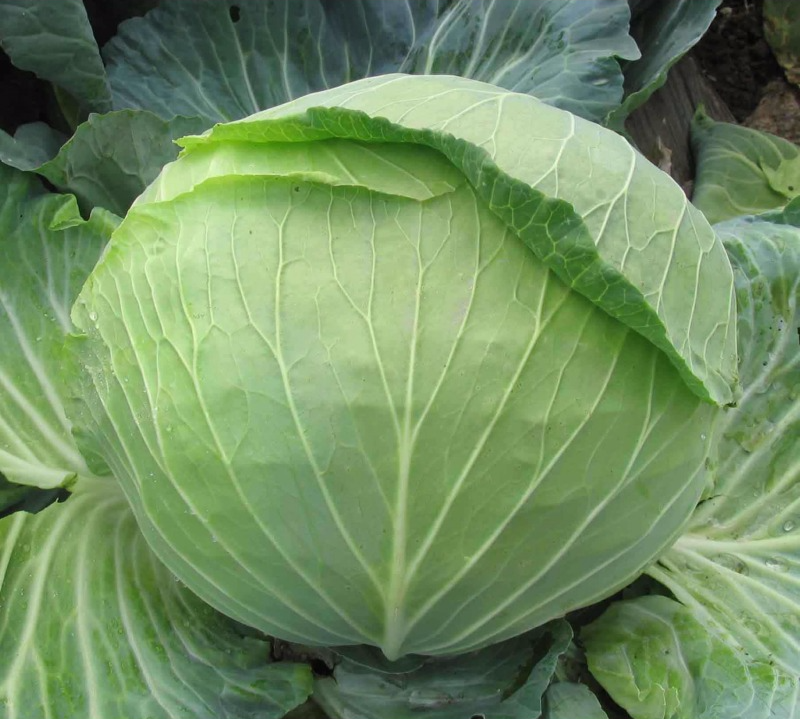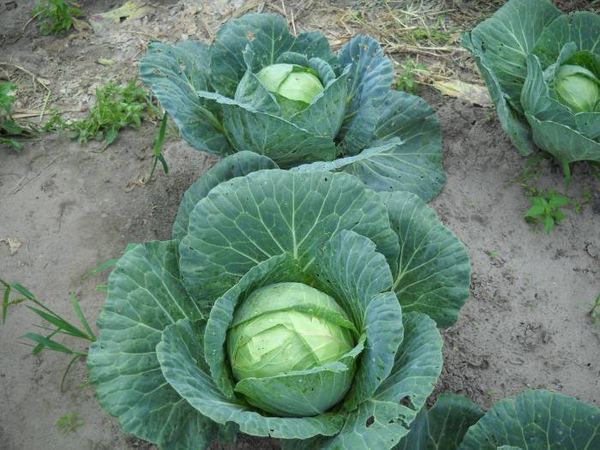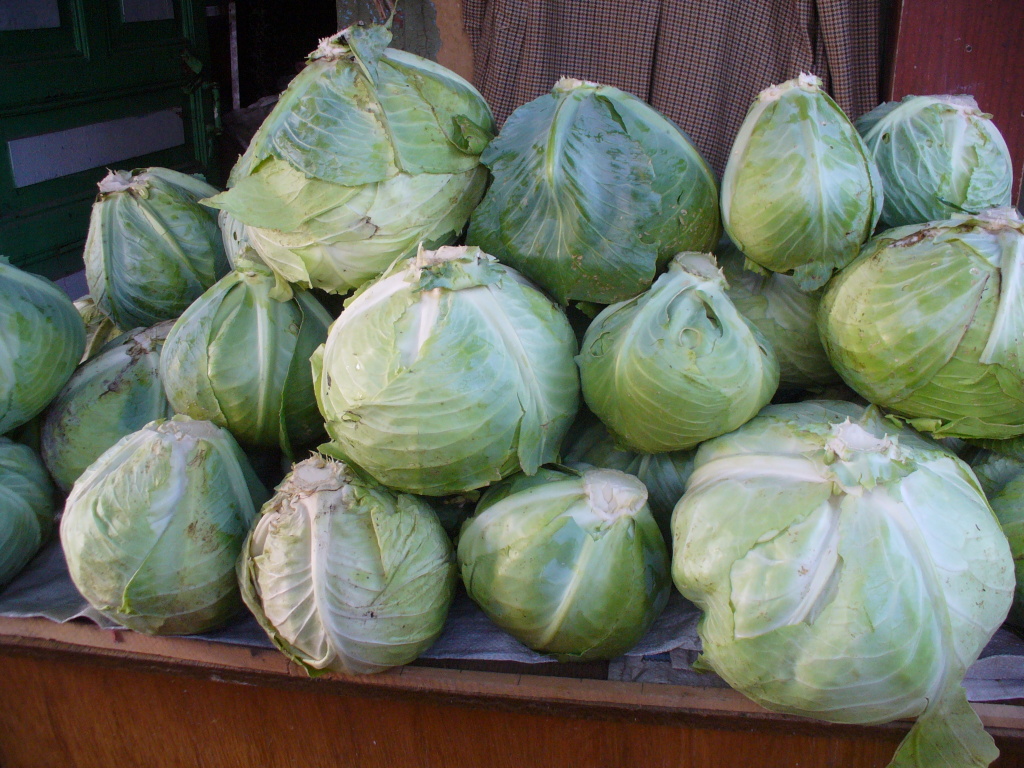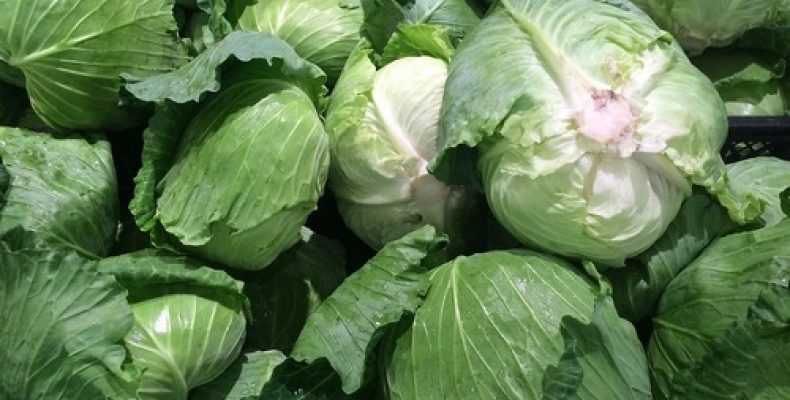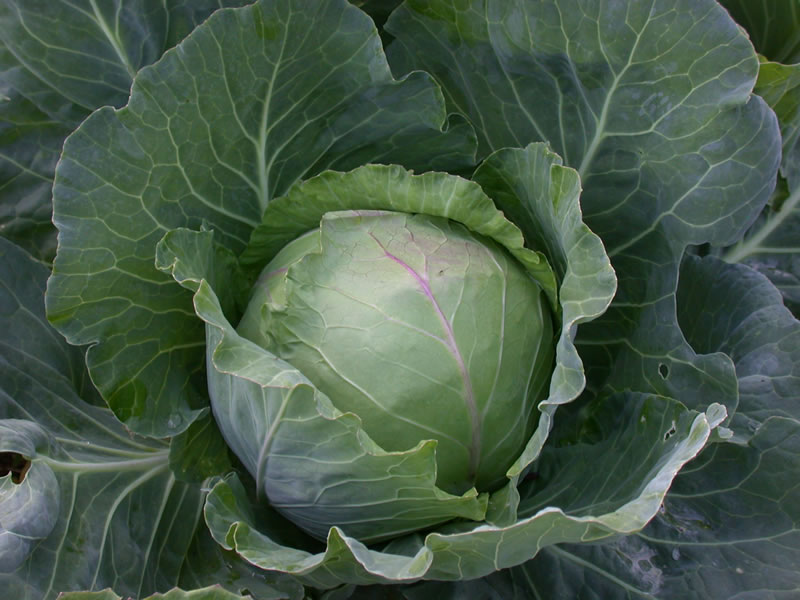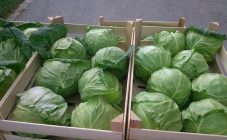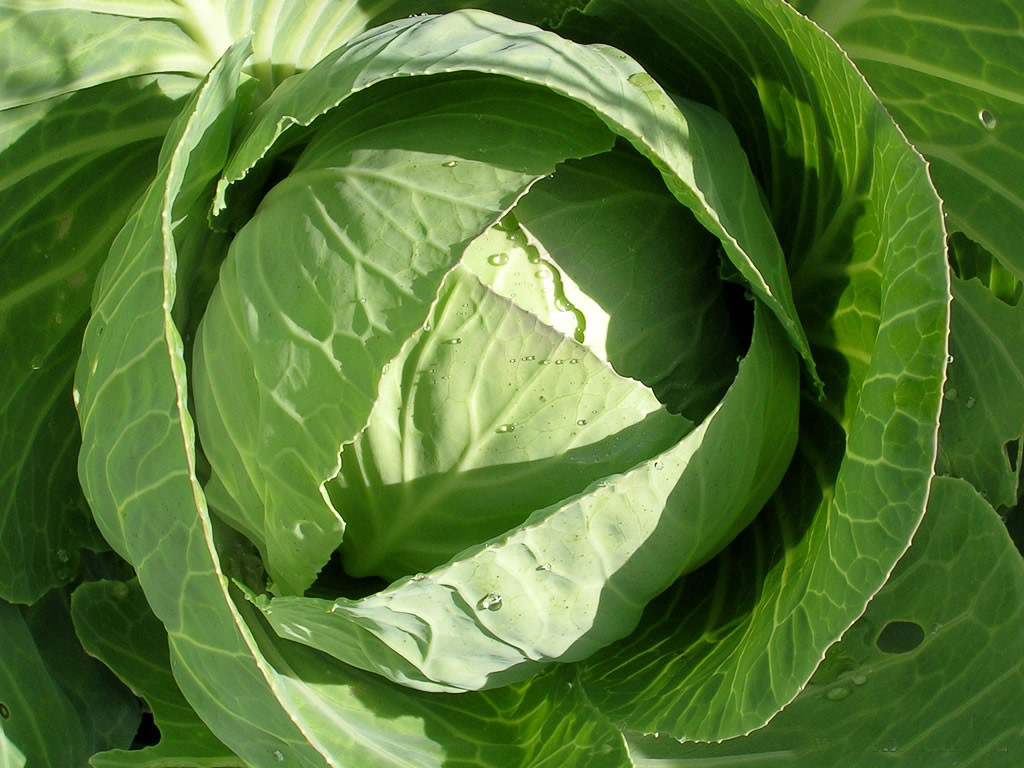Content:
Cabbage is considered one of the main table vegetables. The most valuable are late varieties of crops that are suitable for long-term storage and are used for fermentation. One of these types is the stone head white cabbage, but when growing and further using it, some features of this type of culture should be taken into account.
Description and characteristics
This variety was developed in Poland over 20 years ago. Since then, it has been widely grown throughout Russia. Stonehead Cabbage is a late ripening species, so harvesting should be done in October.
Heads of cabbage are distinguished by a rounded flattened shape, while the weight of each is from 2 to 4 kg. But if all the requirements of the crop are met during cultivation, this indicator can be increased to 5-6 kg. The diameter of one cabbage rosette reaches 70-80 cm, so this feature should be taken into account when planting seedlings in a permanent place. The lower row of leaves is slightly raised.
Cabbage Stone Head, according to the description of the variety, is characterized by a dense structure, since there are practically no voids between the leaves, therefore even small specimens are quite heavy.
Heads of cabbage are light green on top, and white when cut. The stump is small, and the veins on the cabbage leaves are thin. The yield of the variety reaches 8-10 kg per square meter. Based on the varietal affiliation, the growing season for the seedling method is 115-125 days, and when planting seeds directly in the open ground - 140-160 days.
Due to its high taste properties, the variety is distinguished by its versatility, therefore it is recommended for consumption, both fresh and processed.
This type of crop is not afraid of short-term frosts and therefore is suitable for growing in areas with harsh climates. But the collection of cabbages for long-term storage is recommended to be carried out in advance before a sharp drop in temperature.
Growing features
When growing the Stone Head, some agricultural conditions should be observed, since any mistakes can cause the heads of cabbage to rot during long-term storage. Therefore, it is worthwhile to familiarize yourself in advance with the characteristics of this variety and the basic requirements of the culture.
Planting timing and seed preparation
This variety of white cabbage can be grown both with the help of seedlings and by sowing seeds directly into the ground. Using the first option, you can significantly shorten the growing season, and the second - to simplify the growing process. Which way to choose each gardener decides for himself, based on his capabilities and employment.
Seedlings can be planted in the first half of March, and in open ground at the beginning of May. Before sowing, the seeds should be calibrated, and then immersed in water for 20 minutes, heating it to a temperature of 55 degrees.
After the warm procedure, the seeds should be immersed in cold water for 10 hours, with sodium humate dissolved in it, which will help to maximize germination.After the time has passed, the planting material must be laid out on a paper napkin and put in the refrigerator for hardening for 24 hours.
At the end of the preparation, planting should be carried out. To do this, you need to prepare special containers by filling them with an earthen mixture:
- 1 part - sod land;
- 1/2 - peat;
- 1/3 - river sand.
After abundant watering of the soil, it is necessary to plant in grooves with a depth of 1 cm and maintain a distance between the seeds of 1 cm. In the future, it is necessary to maintain a slightly damp substrate, avoiding overflow and drying out. Seedlings appear within 7 consecutive days after planting.
Seedlings should be planted in the ground if the seedlings have 5 true leaves. Planting should be carried out at an air temperature of at least 12 degrees, adhering to the scheme: row spacing - 55 cm, and the distance in a row - 65 cm.
Seat selection
Choosing the right site for cabbage The stone head is the main guarantee of a good harvest. Therefore, planting should be carried out in an open, well-lit area. Loamy soil with a low acidity level and a high humus content is considered optimal.
Based on the varietal affiliation, it is recommended to plant Stone Head cabbage after such predecessors:
- legumes;
- cucumbers;
- early potatoes;
- carrot;
- alfalfa;
- tomatoes.
Further care
After planting, the cabbage needs constant watering, which guarantees the full development of the heads. Moreover, as it grows, the need for water is constantly increasing. Therefore, immediately after planting, it is necessary to pour 7-9 liters per square meter, and in the future, the amount of moisture should be increased, and the frequency of watering should be reduced to 2 times a week.
Caring for cabbage also implies constant loosening of the soil when a crust forms after rain. And it is also necessary to constantly remove weeds until the head of cabbage is completely formed. After the seedlings are rooted in a new place, it is necessary to carry out preventive treatment with insecticides against cruciferous fleas and cabbage flies. Subsequently, spraying should be repeated when the heads are formed.
The first feeding should be carried out 2 weeks after planting in the ground. In this case, it is recommended to use organic fertilizers. The second stage of feeding is carried out 2-3 weeks after the previous one, using mineral and organic fertilizers in the complex. And the last stage should be carried out no later than 3 months before harvest, but at the same time it is necessary to exclude nitrogen fertilizers, and give preference to phosphorus-potassium fertilizers.
Cabbage needs constant hilling of seedlings, therefore, initially the procedure is carried out weekly, and later - once every 14 days.
Collection and storage
Harvesting is recommended on a dry day. The readiness of the cabbage for harvesting can be determined by squeezing the head of cabbage, while the shape should not change.
Before storing cabbage for long-term storage, it must be dried in a dry ventilated room. And then transfer it to the cellar, where the temperature should not exceed +1 degrees, and the humidity should be within 90%.
Cabbage should be stacked with stalks down on wood pallets sprinkled with sawdust. Under such conditions, this variety of white cabbage can be stored well until spring.
Advantages and disadvantages
Like any other type of vegetable, the Stone Head has its own advantages and disadvantages.
The main advantages of the view:
- universality of application;
- cold resistance;
- dense fruit structure;
- high resistance to fusarium and rot;
- long storage period;
- resistance to head cracking;
- possibility of transportation without loss of marketable qualities.
The only drawback of the species is the tough leaves, so the variety lacks juiciness.
White cabbage of Kamennaya Golova variety is the optimal type of crop for long-term storage. At the same time, it is absolutely not demanding in care, which allows you to grow a good harvest of vegetables without any particular difficulties.
